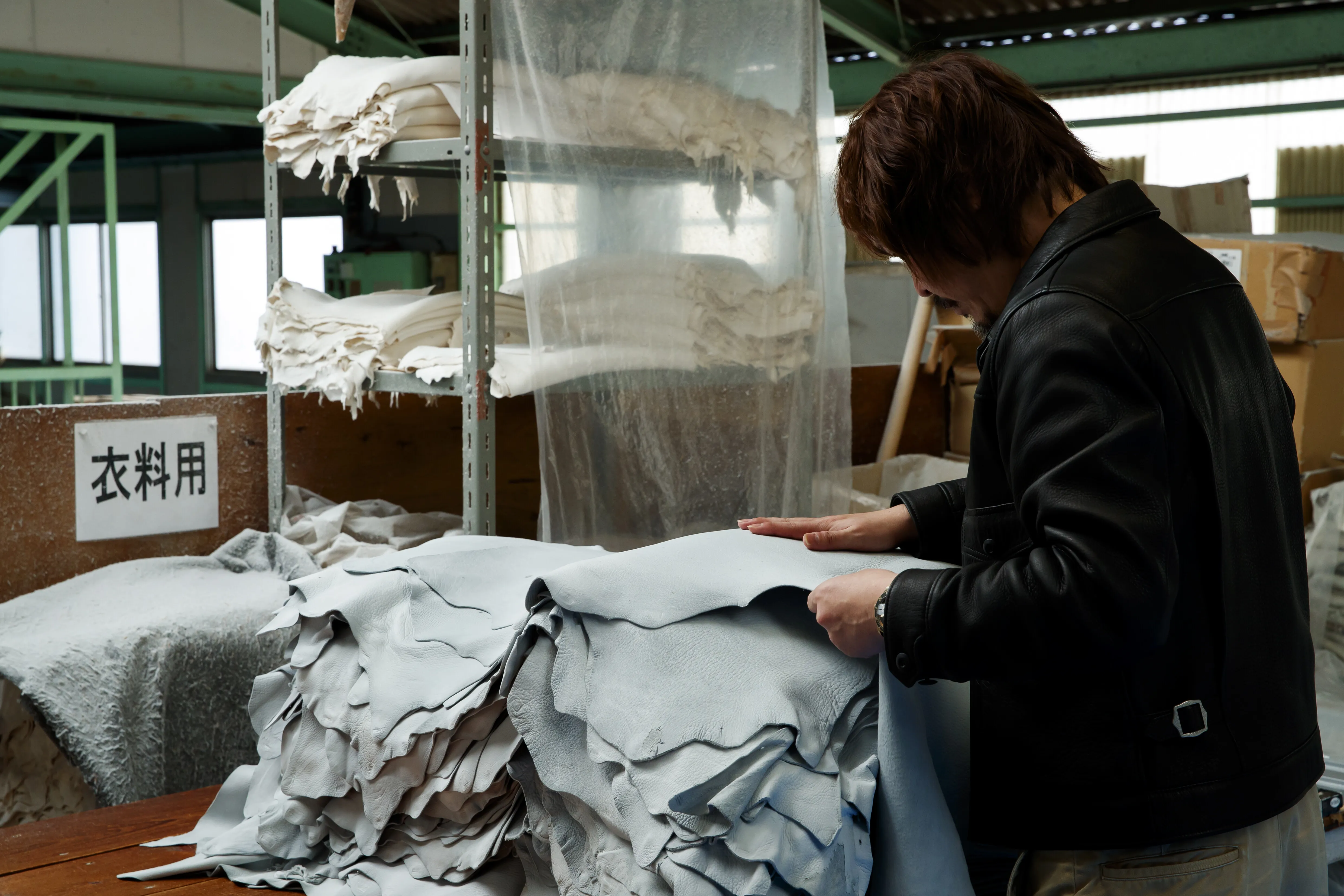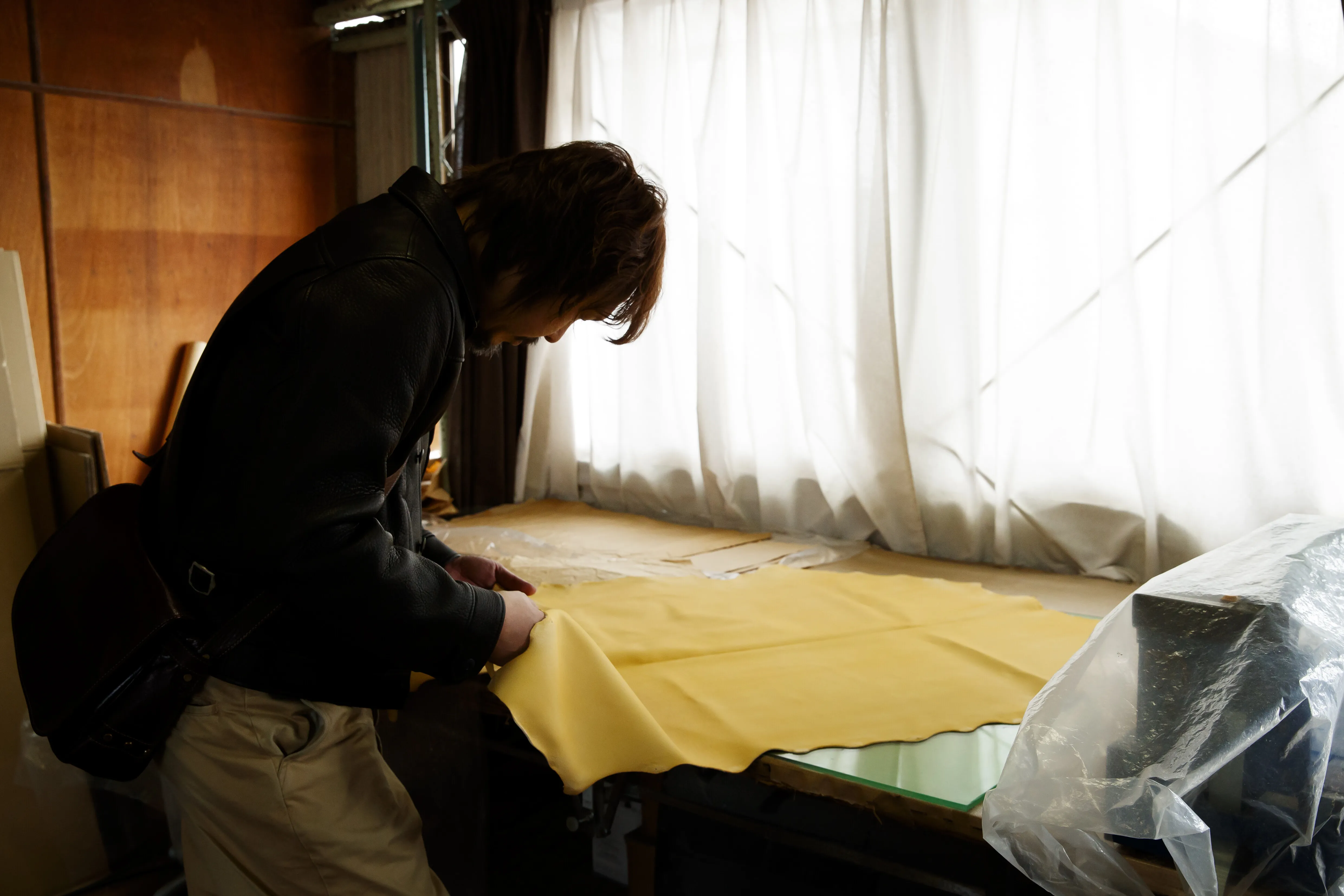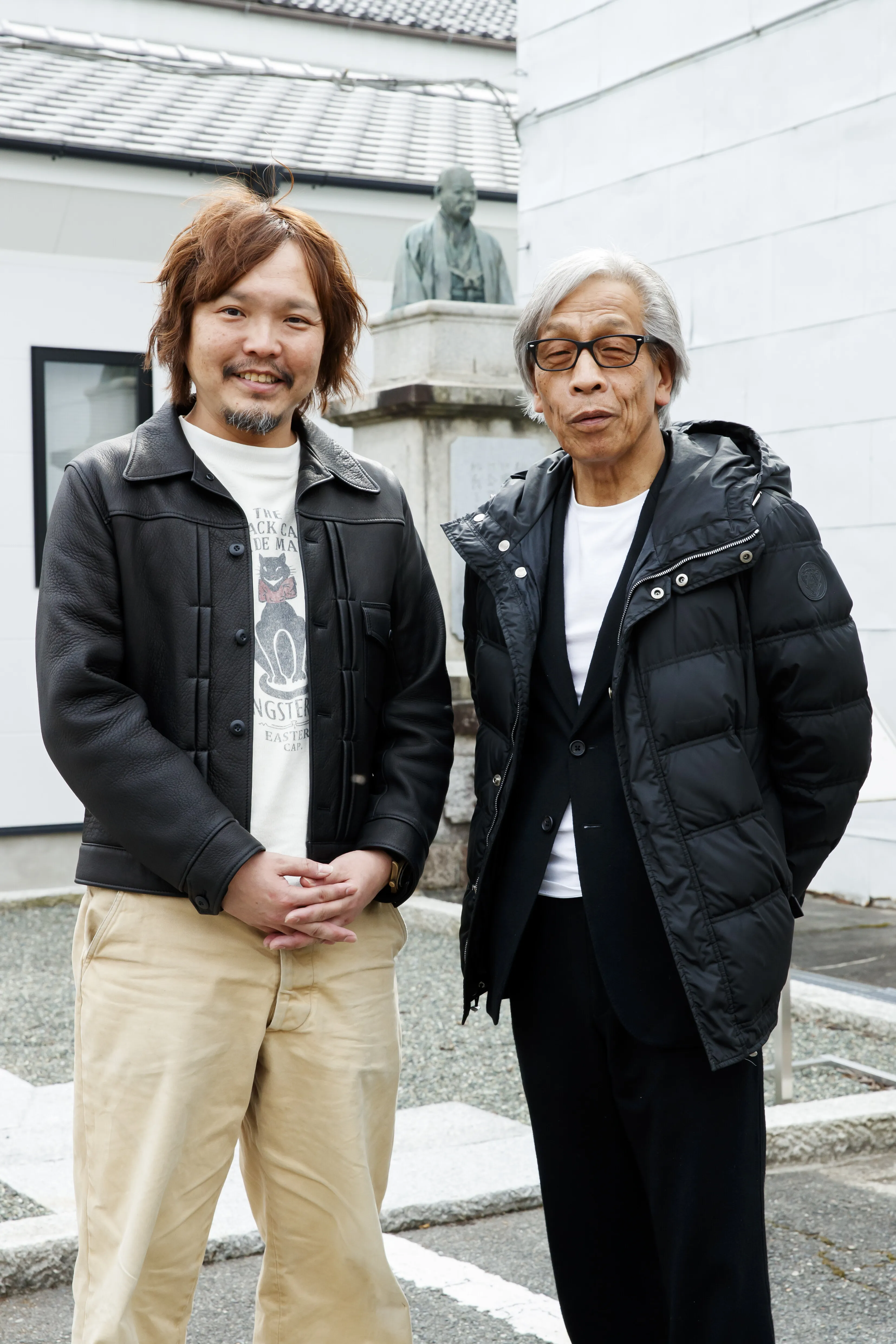2025.06.30
Head Over Heels for a World-Class Deerskin Tannery in Nara
A brief history of deerskin and its deep affinity with the Japanese people since ancient times

When you hear “Y'2 Leather,” you might think of horsehide products like our Eco Horse and Indigo Horse. Leather jackets often evoke stiff, taut material that really needs work to break in. But this is just the tip of the iceberg when it comes to appreciating leather. As leather specialists, we at Y'2 Leather, we approach all leathers at full force, and would like to give a closer look at another side of our products. These days, I have been particularly excited about deerskin, and I'd like to tell you about our deerskin tanning partner.
Deerskin has a surprisingly long history in Japan as a material for making leather. The Shoso-in Repository of Todaiji Temple in Nara houses many deerskin treasures such as tabi. Even after more than 1,300 years, those relics are said to retain remarkable suppleness. Since those days, deerskin has been used for traditional purposes such as armaments and Shinto rituals. Japan's hot and humid climate is also a likely reason for deerskin’s long history, due to its breathability and resistance to humidity and water.

And its feel, its texture – or as we say in Japanese – its shitsukan. With a minimal finish using an ample oil treatment without any pigment, it is so soft and supple, flowing through your fingers and enveloping your body like a “second skin.” These are the qualities that draw us to deerskin, that we want to bring to life in the form of leather jackets.
To meet our standards of quality, we require deerskin that is large, nearly scratch-free and sufficiently thick. A bar set so high led us to a tannery in Nara Prefecture called Fujioka Yukichi Honten. This tannery based in a quiet town in the mountains of Nara boasts an impressive legacy: it was founded by Yukichi Fujioka in 1883, and will soon celebrate its 150th anniversary. In the past, they crafted gloves for the imperial household, mari balls for kemari–a non-competitive ritual sport passed down in Japan for over 1400 years, and flying gloves for Zero Fighter pilots during WWII. Their more recent work includes everyday items like kendo equipment and chamois leather (to clean camera lenses and other delicate surfaces). Renowned worldwide as a premier deerskin tannery, Fujioka Yukichi Honten stands unrivaled in its craft.
A legacy tannery’s pride: Preserving tradition while embracing innovation

Our partnership with Fujioka Yukichi Honten began in the era of their fifth-generation president Mr. Fujioka, and my father, the current chairman of Y’2. To this day, they provide us with premium deerskin every turn of the season. Despite our lasting relationship, I rarely get the chance to visit them in person. My last visit was ten years ago! It wasn’t until last March, when a feature by Hail Mary Magazine presented me with the opportunity for our long-awaited reunion.
Here’s some backstory to our interview. For the last decade, Fujioka-san has refused
any media exposure (except for some newspaper coverage). Word has it he is too busy focusing on his work to accept any offers. The editorial team at Hail Mary Magazine was planning a feature on Y’2 for their May issue and requested me to reach out to him. Expecting rejection, I was surprised when he gladly agreed: “When I got your request, I couldn’t help but think that as your materials supplier, it’s only natural to do our part and accept the interview.” He was also encouraged by his prior relationship with the reporters. And so, I made my way to Fujioka Yukichi Honten.

Fujioka Yukichi Honten sits along a channel of the Hono River, protected by the Uda Mikumari Shrine, built in the second century. The tannery uses this rich groundwater, which has never run dry, for deerskin tanning. Tanning requires vast amounts of water, whose quality greatly influences the finished result. They have developed their craft in this land for five generations, a testament to the importance of water quality in deerskin tanning, and the reverent displays to the water god on their factory premises reflect their commitment to protecting this water source.
As Mr. Fujioka related to me their rich history, I toured the factory, where everywhere I looked I could sense the pride of the shokunin (=skilled artisans) in their meticulous work. I laid my eyes on an innovative deerskin finished to a remarkable 0.3mm–so thin you could hardly believe it’s leather–and the ibushigawa technique of smoking deerskin with straw that has been stacked and aged for a year.

“Our presidents across generations remained steadfast in our craft, keeping up with current trends while refusing to make compromises. I believe that’s why we’ve survived for almost 150 years. If our vision wavers, we will forget who we are—and that would mean the end for us.” So says Mr. Fujioka, the fifth-generation president, the first to venture into the apparel industry, launching the recognition of the tannery’s high quality deerskin among American-casual fans in Japan and worldwide.
Mr. Fujioka’s humility has not been hampered one bit by his growing fame. Rather than cutting corners, he goes the extra mile to uphold his commitment of making each product better than the last. At the same time, he continues to innovate to create one-of-a-kind leather, an ethos that really resonates with us at Y’2. It blows me away that Fujioka-san shows up at the factory at three in the morning, and personally inspects each and every leather piece, a work ethic he has maintained since his youth.

Visiting Mr. Fujioka at his tannery for the first time in ten years, I was struck by his unwavering commitment to craftsmanship and the pride in preserving the heritage of this Japanese industry while evolving with the times. His way of life deeply inspired me, and I felt a renewed passion, a strengthened resolve, not just to use deerskin, but to use Fujioka Yukichi Honten’s deerskin.
